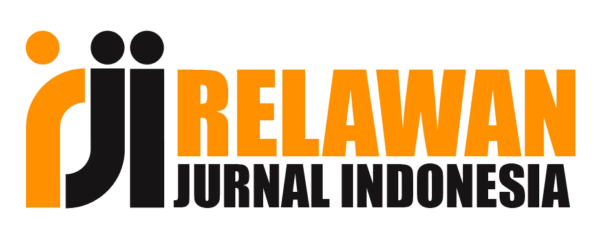Pengembangan modul berbasis 3D Pageflip professional materi pemantulan dan pembiasan cahaya untuk meningkatkan kemandirian belajar siswa
Abstract
This study aims to determine the effect of using a digital module based on 3D Pageflip Professional on students' independent learning. The research method used is 4D. The 4-D development model (Four D) is a learning device development model. The 4D development model consists of 4 main stages, namely: Define, Design, Develop and Disseminate. The sample that became of testing were high school students. A 3D Pageflip Professional-based physics learning module for light reflection and refraction has been produced which can be accessed through gadgets or other electronic devices. Based on the results of the feasibility test conducted on the respondents consisting of students who had studied the material of reflection and refraction of light during high school and 4 education practitioners (physics teachers) all aspects contained in the module were included in the appropriate category so that the module was feasible to use.
Keywords
Full Text:
PDF (Bahasa Indonesia)References
Alias, N., & Siraj, S. (2012). Effectiveness of isman instructional design model in developing physics module based on learning style and appropriate technology. Procedia - Social and Behavioral Sciences, 64(4), 12–17. https://doi.org/10.1016/j.sbspro.2012.11.002
Bakri, F., Muliyati, D., & Nurazizah, I. (2018). Website e-learning berbasis modul: bahan pembelajaran fisika SMA dengan pendekatan discovery learning. WaPFi (Wahana Pendidikan Fisika), 3(1), 90.
Cobb, R. Jr. (2003). The relationship between self-regulated learning behaviors and academic performance in web-based courses. Dissertation, 54(2), 1–124.
Hadi, M., & Sovitriana, R. (2019). Model kemandirian belajar siswa madrasah aliyah negeri 9 Jakarta. IKRA-ITH HUMANIORA: Jurnal Sosial dan Humaniora, 3(3), 26–32.
Hidayat, D. R., Rohaya, A., Nadine, F., & Ramadhan, H. (2020). Independent learning of students in online learning during the covid-19 Pandemic. Perspektif Ilmu Pendidikan, 34(2), 147–154.
Indah Fajrotuz Zahro, I. F. Z., Rizky Amalia, R. A., & Sugito, S. (2021). Deskripsi kemandirian siswa dalam pembelajaran daring pada masa pandemi Covid. Attanwir: Jurnal Keislaman dan Pendidikan, 12(1), 63–75.
Kurniawati, T. D., Akhdinirwanto, R. W., & Fatmaryanti, S. D. (2021). Pengembangan e-modul menggunakan aplikasi 3d pageflip professional untuk meningkatkan kemampuan literasi sains peserta didik. Jurnal Inovasi Pendidikan Sains (JIPS), 2(1), 32–41.
Patimah, E., & Sumartini, S. (2022a). Kemandirian belajar peserta didik pada pembelajaran daring: literature review. Edukatif: Jurnal Ilmu Pendidikan, 4(1), 993–1005.
Patimah, E., & Sumartini, S. (2022b). Kemandirian belajar peserta didik pada pembelajaran daring: literature review. Edukatif: Jurnal Ilmu Pendidikan, 4(1), 993–1005.
Perdana, F. A., Sarwanto, & Sukarmin. (2017). Keterampilan proses sains untuk meningkatkan kemampuan berpikir kritis dan motivasi belajar siswa SMA/MA kelas X pada materi dinamika gerak. Jurnal Inkuiri, 6(3), 61–76.
Puspitasari, A. D. (2019). Penerapan media pembelajaran fisika menggunakan modul cetak dan modul elektronik pada siswa SMA. Jurnal Pendidikan Fisika, 7(1), 17–25.
Rachmawati, D. O. (2010). Penerapan model self-directed learning untuk meningkatkan hasil belajar dan kemandirian belajar mahasiswa. Jurnal Pendidikan Dan Pengajaran, 43(3), 177–184.
Sari, J. I., Syamswisna, S., & Yokhebed, Y. (2019). Kelayakan bahan ajar modul pada materi keanekaragaman hayati kelas X SMA. Jurnal Pendidikan dan Pembelajaran Khatulistiwa (JPPK), 8(6).
Suryandari, A. W., & Burhendi, F. A. C. (2020). Studi pendahuluan karakteristik pembelajaran online fisika selama masa pandemi covid-19. JPD: Jurnal Pendidikan Dasar, 1–9.
Tahar, I., & Enceng. (2006). Hubungan kemandirian belajar dan hasil belajar pada pendidikan jarak jauh. Jurnal Pendidikan Terbuka dan Jarak Jauh, 7(2), 91–101.
DOI: https://doi.org/10.17509/wapfi.v7i1.45372
Refbacks
- There are currently no refbacks.
Copyright (c) 2022 Aprillia Andika Rahayu, Ajeng Sarah Mezzaluna

This work is licensed under a Creative Commons Attribution-ShareAlike 4.0 International License.
The Journal Wahana Pendidikan Fisika http://ejournal.upi.edu/index.php/WapFi/ is licensed under a Creative Commons Attribution-ShareAlike 4.0 International License
The Journal WaPFi (Wahana Pendidikan Fisika).
All rights reserverd. pISSN 2338-1027 eISSN 2685-4414
Copyright © Faculty of Mathematics and Science Education (FPMIPA) Universitas Pendidikan Indonesia (UPI)










